Hansel and Gretel belong among the most popular fairy tales of all time. On the surface it's a story about two children lost in the woods, facing danger and defeating a mighty enemy, and finally returning home with great treasure.
If we dig a bit deeper, it's a much more complex narrative with elements of psychological studies on two levels. One is obvious - the dynamics of a relationship between siblings who are forced to grow up and in the meantime help each other. The other is less exposed - the relationship between father and mother (stepmother) who are caught in a literally deadly dilemma - sacrifice their own lives or their children.
Please, note, how Otto Kubel used light in tune with the fairy tale (of course night and day, exterior and interior are changing) but also in relation to the overall mood (starting very dark, continuing with occasional rays and flames of hope until the very last scene when light and optimism win.
All presented illustrations were published as picture postcards by Uvachrom in 1930.
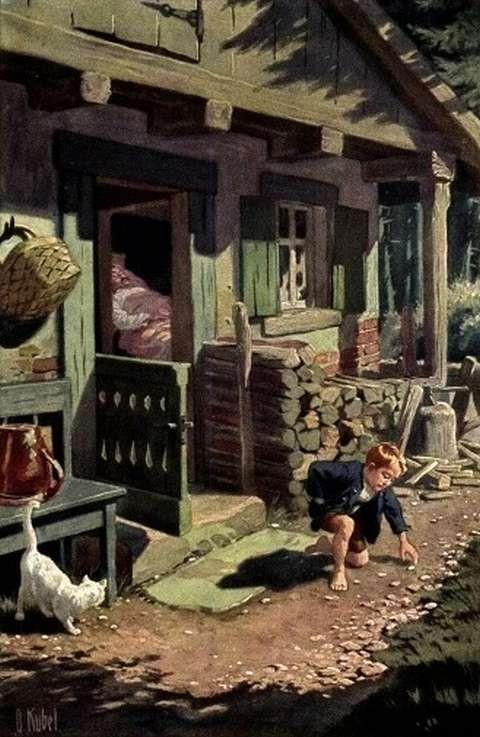
The situation is bad. There is almost nothing to eat. Hansel and Gretel are very hungry. Even more, their stepmother convinces their father to get rid of the children, so there would be at least two less hungry mouths at home. Hansel overhears the plan and makes his own.
He decides to use white peebles to mark the way through the forest so he and his sister can find the way home.
His plan works well.
Unfortunately, their stepmother still wants to get rid of Hansel and Gretel. This time Hansel can't use pebbles and he tries to mark the way with breadcrumbs.
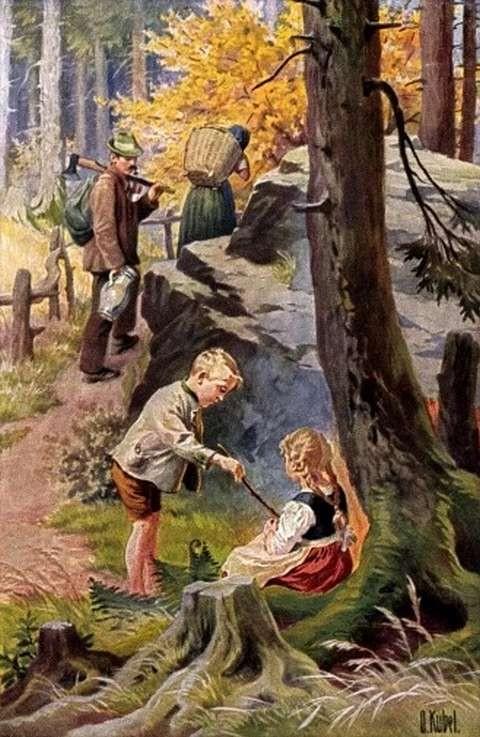
Parents are gone and the kids stay alone.
The birds eat the crumbs and children are lost in the woods. There is some water but no food. They are hungrier than ever. They wander through the forest until they find a cottage.
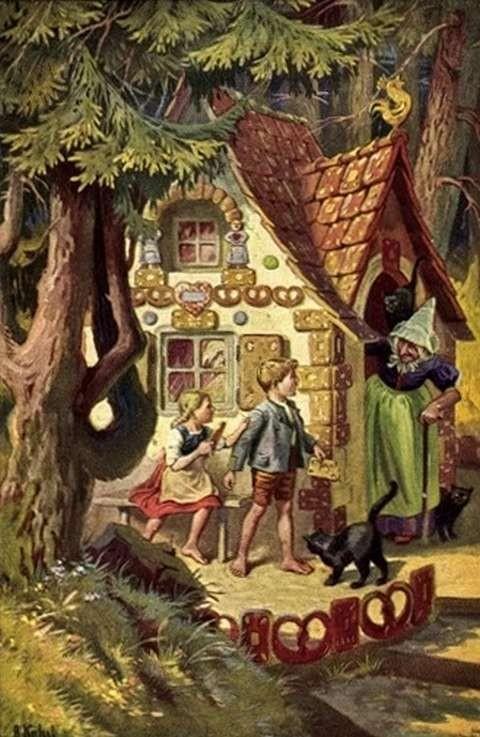
This cottage is not an ordinary one. It is made of sweets. Hansel and Gretel immediately start eating. An old lady invites them to enter. She has more food inside. She seems nice and the kids don't suspect anything. They don't know she is a witch praying for stray children.
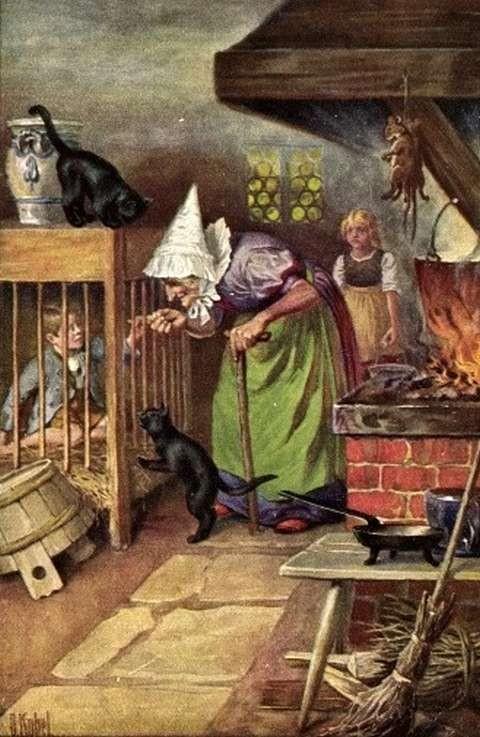
When they come in, the witch imprisons Hansel in a cage. She says Hansel should gain some weight before she bakes him. Gretel will help her make him fat. She will eat him later.
Gretel is smart. She notices that the witch doesn't see well and relies on touch when checking if Hansel is fat enough. So Gretel gives her brother a chicken bone. When the witch wants to grip his finger, Hansel gives her a bone. He gains some weight but the witch believes he is still malnourished.
After some time, the witch loses patience and decides to eat the boy anyway. She makes her oven ready and tells Gretel to check if the oven is hot enough. Her plan is to bake Gretel first and Hansel right after.
Gretel pretends stupid. She asks the witch how to check the oven.

When the witch tries to show her, Gretel pushes the witch in and closes the door. The witch burns inside the hot oven.
Gretel rescues her brother. They find a lot of gold and other precious stuff in the witch's hut. They return home.
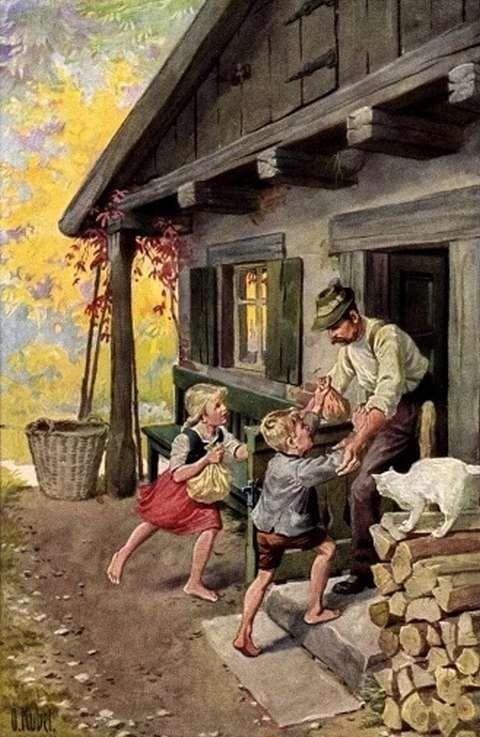
When they come home, they find out that their stepmother died. Their father is happy seeing his kids and they are now rich. So they can live happily from now on.
The story can be interpreted in many ways. One interesting aspect is the historical approach. In older versions, it was the mother, not the stepmother who wanted their children dead to improve her chances of surviving the famine. In even older versions father has an idea of getting rid of the children.
It's important to know that famine was a serious problem in older times, even in the times of the Brothers Grimm (the 19th century). People regularly died of starvation. On the other hand, they had a lot of children, and a couple of dead kids was not an issue like it is today (in the so-called developed world with an average of less than two children per family).
To explore even more about this very special fairy tale, you should check another Hansel and Gretel interpretation.